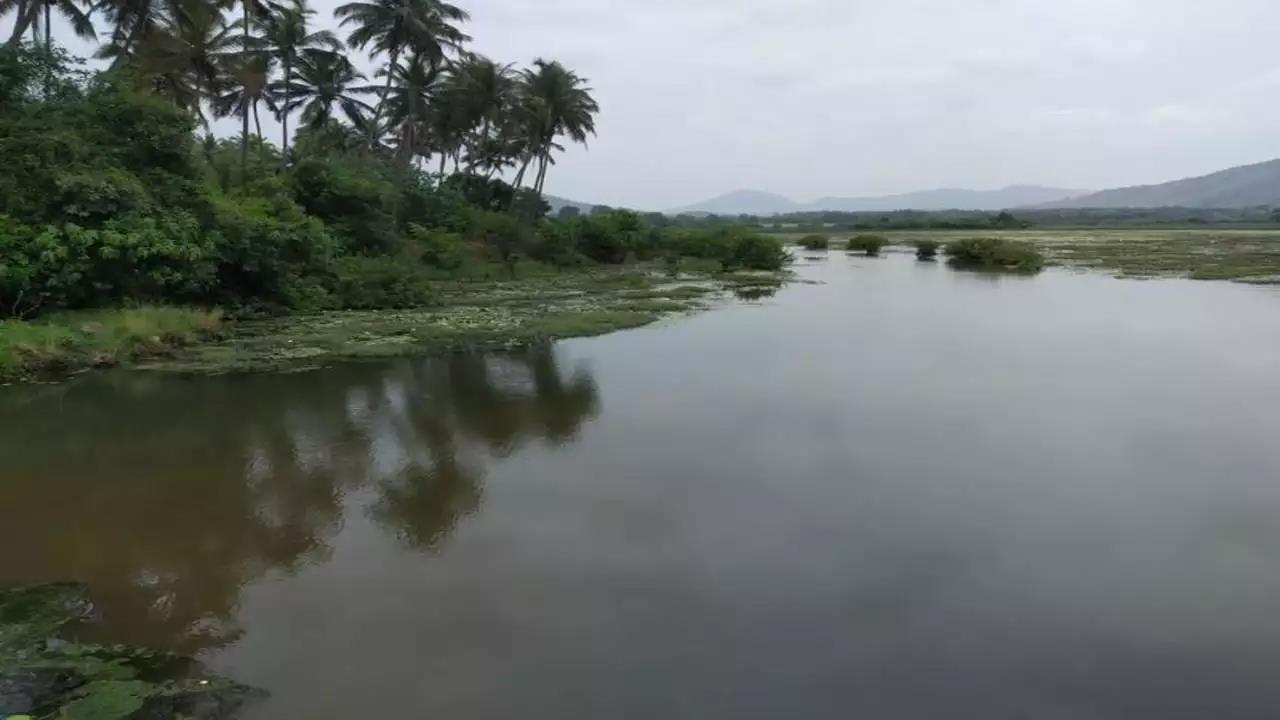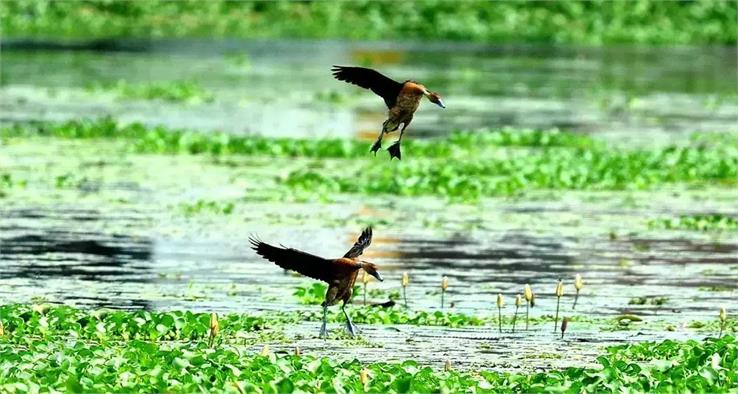"Discover the Beauty of Nanda Lake Wetland In Goa"

Nanda Lake is an exemplary wetland in the pristine state of Goa, India. It is a unique ecological entity, playing a crucial role in supporting the local ecosystem and offering numerous environmental, economic, and social benefits to the region. Nanda Lake of Goa is on the Ramsar Site List because it is a wetland area of international importance for the conservation of biodiversity and for its ecosystem services. The lake provides habitat for a variety of species and supports the livelihoods of local communities. Its inclusion in the Ramsar Site List helps ensure its protection and management for future generations.
Also Read: Ramsar Sites In India
The Significance of Nanda Lake As A Wetland In Goa And Its Role In The Local Ecosystem
Nanda Lake is in the Sattari taluka of North Goa district. It is nestled amidst the lush Western Ghats, renowned for its rich biodiversity and natural beauty. Although Goa is more famous for its sandy beaches and coastal attractions, Nanda Lake adds another layer of ecological diversity to its natural treasures.
Ecological Significance
Nanda Lake has ecological significance in various fields:
1. Biodiversity Hotspot
Nanda Lake is a hotspot of biodiversity in Goa. The wetland and its surrounding areas provide habitat to a wide range of flora and fauna. Various species of aquatic plants, fish, amphibians, and waterfowl thrive in this unique ecosystem. The lake's pristine waters and the lush vegetation along its banks contribute to its significance as a biodiversity hotspot.
2. Migratory Birds
Nanda Lake is a critical stopover and wintering ground for numerous migratory bird species. During the migratory season, the wetland attracts a diverse array of avian visitors, including ducks, waders, and raptors. Birdwatchers and ornithologists flock to Nanda Lake to observe these migratory birds in their natural habitat.
3. Fisheries
The lake also supports a thriving fishery industry, providing livelihoods to local communities. Various fish species, such as tilapia and catfish, are abundant in its waters. The sustainable management of fish resources is crucial for the local economy.
4. Hydrological Functions
Nanda Lake contributes significantly to the local hydrological cycle. It helps in groundwater recharge, flood control, and sediment retention. Moreover, the wetland acts as a natural filter, improving water quality by trapping pollutants and sediments.
5. Recreational and Tourism Value
Nanda Lake has immense recreational and tourism value. It attracts nature enthusiasts, photographers, and eco-tourists drawn to its serene beauty. Activities like boating, birdwatching, and nature walks are popular among visitors.
Conservation Efforts
The conservation of Nanda Lake is imperative to preserve its ecological, economic, and cultural significance. Several initiatives have been undertaken to protect and sustain this valuable wetland:
1. Protected Area Status
Nanda Lake has been designated as a protected area under various environmental laws and regulations. It falls within the ambit of Goa's forest and wildlife conservation efforts. The wetland is part of a more extensive network of protected areas in the state.
2. Wetland Management Plans
The Goa State Wetland Authority, in collaboration with local authorities and environmental organizations, has developed comprehensive wetland management plans for Nanda Lake. These plans focus on sustainable management practices, including habitat restoration, pollution control, and the promotion of eco-friendly tourism.
3. Community Engagement
Local communities residing around Nanda Lake play a crucial role in its conservation. They are often involved in conservation efforts and participate in activities such as wetland cleanup drives and awareness campaigns. Their traditional knowledge about the wetland's ecology is invaluable.
4. Research and Monitoring
Scientific research and monitoring programs are conducted to assess the health of Nanda Lake's ecosystem. This includes water quality testing, biodiversity surveys, and tracking of migratory bird populations. The data collected informs conservation strategies.
5. Regulation of Activities
To prevent over-exploitation and habitat degradation, certain activities are regulated within and around Nanda Lake. These regulations encompass fishing practices, boating, and construction activities that may encroach upon the wetland's boundaries.
6. Tourism Management
The tourism potential of Nanda Lake is being harnessed responsibly. Ecotourism initiatives are being promoted to ensure that tourist activities do not harm the fragile ecosystem. Additionally, visitor guidelines and codes of conduct are in place to minimize human impact.
7. Education and Awareness
Public awareness campaigns and educational programs are conducted to enlighten the local populace and tourists about the importance of Nanda Lake and the need for its conservation. These initiatives foster a sense of responsibility among all stakeholders.
Challenges and Future Prospects
Despite the ongoing conservation efforts, Nanda Lake faces various challenges. Some of these include:
1. Pollution
Pollution from nearby human settlements, agricultural runoff, and tourism-related activities remains a significant concern. The degradation of water quality can harm the aquatic life and the overall health of the wetland.
2. Land Use Changes
Land use changes, including encroachments and unplanned development in the vicinity of Nanda Lake, pose a threat to the wetland's integrity. Such activities can disrupt the natural hydrological processes and degrade the habitat.
3. Climate Change
The impact of climate change, including altered precipitation patterns and temperature fluctuations, can affect the wetland's water balance and ecosystem dynamics. Adaptation strategies are crucial to mitigate these effects.
In conclusion, Nanda Lake in Goa is a precious wetland that holds immense ecological significance. Its role in supporting biodiversity, providing livelihoods, and contributing to the local hydrological cycle cannot be overstated. The conservation efforts in place, coupled with ongoing research and community involvement, offer hope for the sustainable future of this vital natural resource. However, it is essential to address the challenges it faces, particularly pollution and land use changes, to ensure the continued health and prosperity of Nanda Lake for generations to come.













